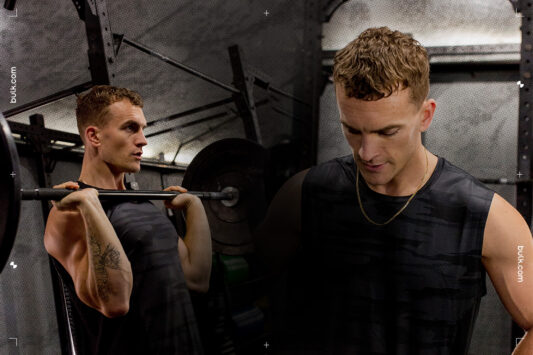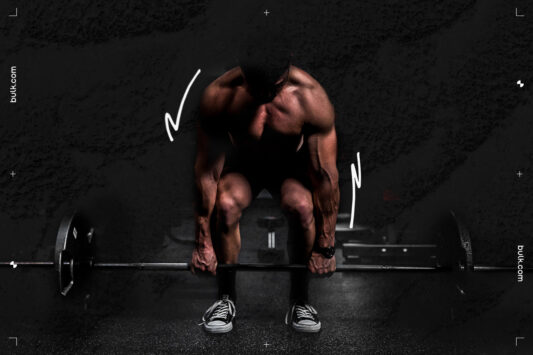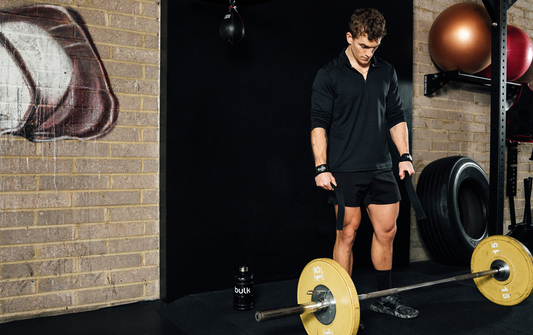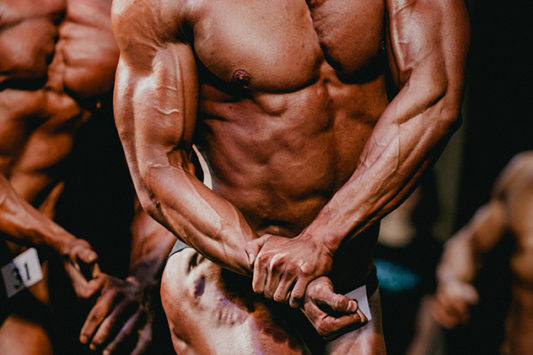Should you focus on lifting for reps, or aim to lift heavy? Volume or intensity? Discover the best approach for your goals.
One size definitely doesn’t fit all in the weights room. On any given day, you’ll see people training with barbells, dumbbells, machines, or purely bodyweight. Some will be moving quickly between sets, repping out 15+ reps and adding in a drop-set to finish. At the other end of the scale, you’ll see folk carefully building up to heavy, near-max lifts and repping out 5, 3, or even single reps.
So who’s right?
The answer is: both of them.
And what you should do depends on your goal, your strength level, your experience and confidence, and the context of your current training block.
One thing’s for certain, it’s a great question to ask.
Once you’ve been training for a while, your progress will slow down or maybe stop altogether. At this point, you either throw in the towel or decide to switch things up to keep on progressing. You could lift heavier, or add more reps to your workouts. Weights (how much you lift) and reps (how many times you lift it) combine to give you volume, which is key to progress whatever your final goal might be. Changing at least one workout variable is the key to achieving progress and avoiding the dreaded plateau.
Let’s look at the pros and cons of lighter, higher rep training vs heavier, low rep training.
HIGH REPS WITH LOW WEIGHTS
Sets of high repetitions (usually taken to mean 10-12 and above) are, by default, usually performed with lighter weights. After all, if you can do 12+ reps with a heavy weight, then it’s not heavy as far as you’re concerned! High rep work improves muscular endurance and helps with hypertrophy (building new muscle tissue), so it will contribute to increases in muscle size, strength, and your general fitness.
Don’t fall into the trap of thinking high rep training will blast body fat, spot reduce a specific area, or “bring out the cuts” in the muscle group you’re working. High rep work burns fat just like any other rep ratio, but it won’t magically help to achieve a certain look. What is true, is that higher rep lifting keeps your heart rate up for longer, fills the tissue (this is “the pump”), and can lead to a bigger, rounder, more pumped look. And high rep work will get you stronger, just in a different way to the sheer strength of low rep, near maximal lifting.
High rep work allows you to train your entire body, hitting all muscle groups and working on symmetry and balance. Another benefit of choosing to add reps, not weight, to your workouts is that you can keep going for longer without fatiguing your joints and central nervous system. High rep training can also refer to drop-sets, super-sets, giant sets, or circuit-style training. It would be realistic to train full body in a high rep style 3-4 times a week, or to do a body part split approach 5-6 days a week. The same can’t be said for true low rep work – it’s too exhausting.
LOW REPS WITH HEAVY WEIGHTS
Low rep work is usually taken to mean 5 reps or lower, and is typically done by powerlifters and sheer strength athletes who are focusing on form, power, and top-end strength. As you’d expect, low rep efforts are done with a weight you would personally find challenging, working towards 90-95% of your 1-rep max.
Heavy low rep work builds strength, power, and the ability to drive through the toughest part of the rep. This kind of training will build overall maximum strength and improve your efficiency at key lifts. Low rep work is typically done for squats, deadlifts, bench press, and overhead press.
Low reps will feel less taxing on your cardiovascular system at the time, because the set is over more quickly than high rep work. But it is likely to affect your joints and your CNS (central nervous system), meaning you will probably need more rest between heavy low rep training sessions.
Of course, not everyone agrees on what counts as high or low reps. To a powerlifter, 8 reps might feel like cardio, and for a bodybuilder, those 8 reps would be barely getting started. That’s why is crucial that you train for your own goals.
REST PERIODS
The more intense the set has been, the longer you will need to rest before going again. Powerlifters will often rest for 3+ minutes between heavy, low rep sets. Bodybuilders will typically rest for less than a minute between their higher rep sets. This is partly because the focus is different (the powerlifter is aiming for a perfect rep where he can give everything, and the bodybuilder appreciates the cardio element of a faster pace). But there’s a physiological reason, too. The closer you get to your maximal load, the more recovery time you will need.
CAN YOU COMBINE VOLUME AND INTENSITY?
If you’re training for a powerlifting meet or a bodybuilding contest, it’s best to stay in your own lane. But recreational lifters (and off season competitors) can – and should – benefit from periodising their training with a smart blend of higher rep/lower weight work and heavier/lower rep lifting.
If you’ve been training one way or the other for a long time, why not switch things up and challenge yourself with high reps, or heavy lifting? You’ll freshen up your workouts, learn some new techniques, and you might just find a favourite new way to train.
Related articles
Eager to learn more? We believe every person, with support, has the right to transform their lives through fitness. That’s why we’ve put together hundreds of articles with expert advice, all to help you on your fitness journey. From muscle growth, shoulder exercises and other training-related articles, check out some previous blogs below:
Push Day Shoulder Exercises How to maintain a good physique when travelling
Accessory exercises Gym in Ramadan
Alcohol and Muscle Growth Can you Eat Carbs and Lose Weight?
Full body split Building Muscle Mass
Best Macro Split Difference between Powerlifting and Weightlifting















